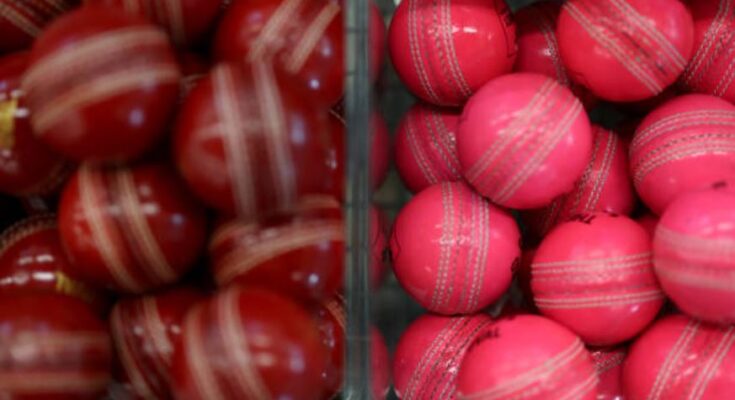By Huzaifa Yousafzai from Lords
Day Two of Middlesex hosting Gloucestershire ended with the visitors on 154 for 5 whilst still trailing by 223 runs as poor weather limited play to just 41.4 overs at Lords.
The County Championship fixture was heavily affected by bad light, wet weather and changing pitch conditions as some interesting questions arose about the colour and type of cricket ball used.
There has now been four rounds of games played with a Kookaburra ball instead of the traditional Dukes in this season’s County Championship meaning players have experienced it at varying points of the English summer.
Middlesex all-rounder, Ryan Higgins hit a double hundred in the first round with the Kookaburra back in April. Now in September he has bowled with it successfully by taking two wickets so far against former side Gloucestershire.
In the post-match press conference, Higgins said, “Today the Kookaburra didn’t feel that much different than the Dukes because there was some pace in the wicket. However, when the wicket is slow there is a massive difference because the Kookaburra ball just doesn’t react quickly enough off the surface.”
With two rounds of Kookaburra matches being played at Middlesex’s home ground Lords, Higgins further elaborated on how the nature of the pitch can have an effect on whether the ball will favour bowlers or batters.
“Looking around at other grounds in the championship the pitches have been really green so maybe you have to leave some extra grass on so that the Kookaburra ball carries through a bit more. I feel like this week the pitch has been really good at Lords because when you’ve missed your length, it’s been easy to score but then at the same time there has been a bit in the wicket for the bowlers.”
Being relatively new to the English game, the Kookaburra ball has led to county bowlers having to find creative ways to find wickets as Higgins explains why he attempted to bowl faster than usual.
“The thing is nobody’s really bowled with it, so it feels like you’re out there playing first class cricket but never with that type of ball. Personally I was just trying to up my pace to get it to do something but over the years we might learn how to bowl with it. It looks like we’re going to be playing a bit more with the Kookaburra, so we have just got to try and work out what the best method is to take wickets.”
Another new angle the Kookaburra has introduced is how it reacts to sunlight and water, both of which have been key factors in this weather affected game at Lords.
“The one thing I would say is good about the Kookaburra bowling wise and for catching and fielding is that when it’s new it’s bright red so it’s a lot easier to see. Obviously, the Dukes is a lot darker but when the kookaburra does get wet it goes dark red as well.”
“The kookaburras hold water a lot more and I don’t know what it is, but the seam definitely holds up the water a lot more than the Dukes. If the ball does get wet, you’re going to have to look after it a lot more than you would with the Dukes because it seems the lacquer just goes away a bit quicker.”
Bad light stopped play on three separate occasions during Day Two, leading to questions about whether a pink ball should be used in the County Championship during Spring and Autumn when the days are shortest.
Whilst giving his opinions on the topic, Higgins admitted that he would favour the usage of the pink ball in county cricket but only if similar changes were made in the test match arena.
“Obviously the pink ball experiment has been done a few years ago but my main thing is that I don’t see (ECB) playing Test cricket with this ball in England so therefore I don’t see how it benefits county cricket. If they are going to play test cricket at Lords in April with a pink ball, then fair play it would be good.”
Gloucestershire all-rounder Oliver Price was batting on 56 before bad light forced him to resume the following day as he also commented on the pink ball and the frustration of stoppages caused by the weather.
“It’s a funny one because it definitely gets dark but then again, we play night games where all you’ve got is the floodlights. It feels like the convention is when it gets dark, and the floodlights have taken over, then you come off. It was definitely gloomy, but it didn’t necessarily feel too bad out there.”
“There’s a lot of experimentation going on with the ball at the minute so maybe we should just stick with the one colour even though it’s frustrating when you feel like you’ve got a bit of momentum, and you have to come off for bad light.”
As foreign investment is set to enter English cricket very soon, issues like poor weather and bad light may need to be solved with a change in the type of ball possibly providing the answer.



